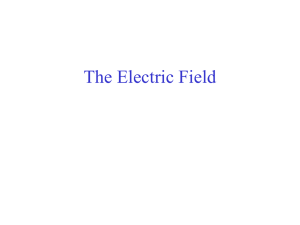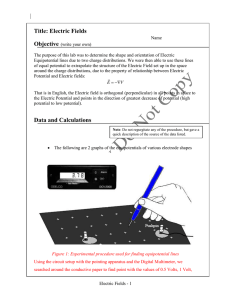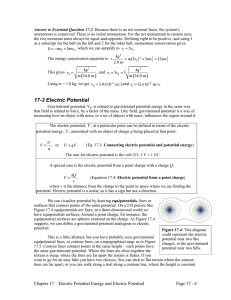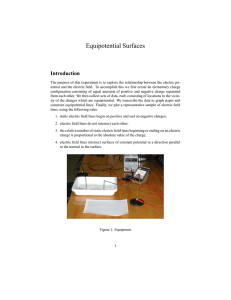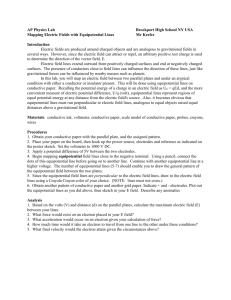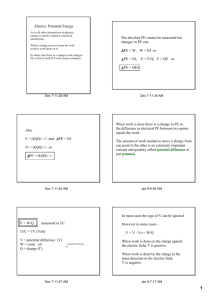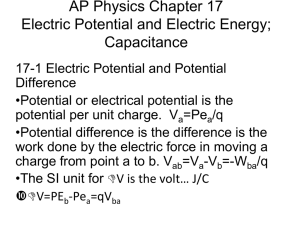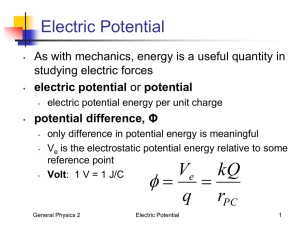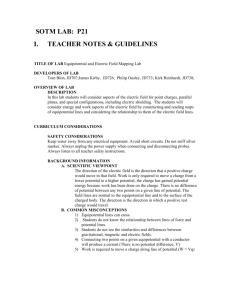03_E2_ws2_key
advertisement
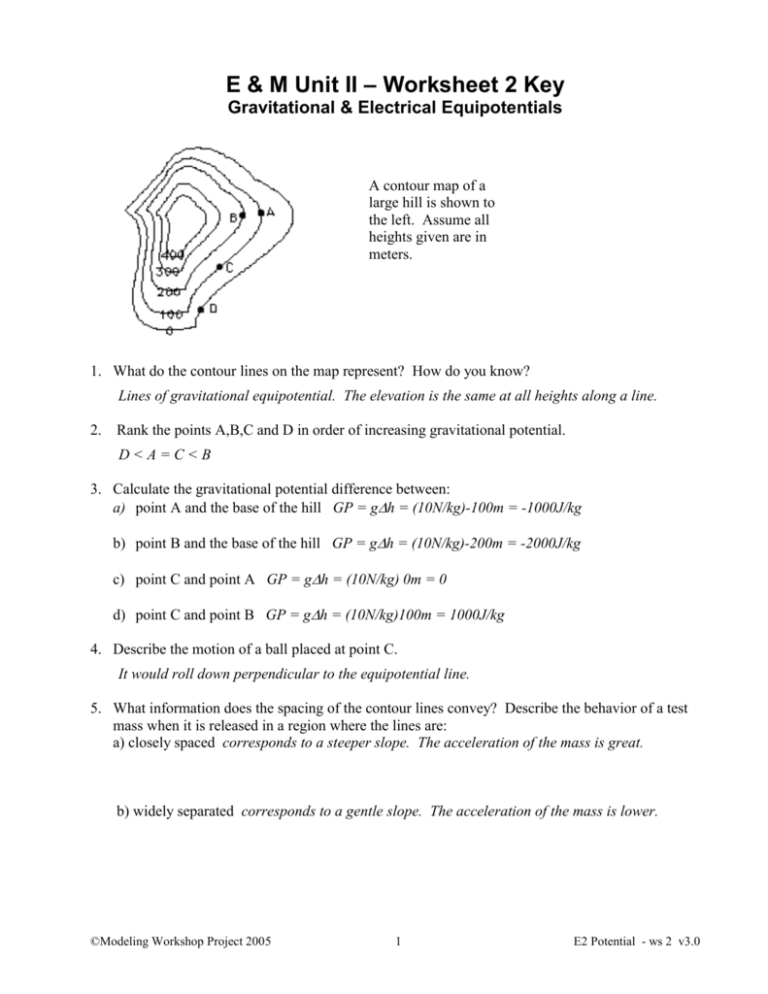
E & M Unit II – Worksheet 2 Key Gravitational & Electrical Equipotentials A contour map of a large hill is shown to the left. Assume all heights given are in meters. 1. What do the contour lines on the map represent? How do you know? Lines of gravitational equipotential. The elevation is the same at all heights along a line. 2. Rank the points A,B,C and D in order of increasing gravitational potential. D<A=C<B 3. Calculate the gravitational potential difference between: a) point A and the base of the hill GP = gh = (10N/kg)-100m = -1000J/kg b) point B and the base of the hill GP = gh = (10N/kg)-200m = -2000J/kg c) point C and point A GP = gh = (10N/kg) 0m = 0 d) point C and point B GP = gh = (10N/kg)100m = 1000J/kg 4. Describe the motion of a ball placed at point C. It would roll down perpendicular to the equipotential line. 5. What information does the spacing of the contour lines convey? Describe the behavior of a test mass when it is released in a region where the lines are: a) closely spaced corresponds to a steeper slope. The acceleration of the mass is great. b) widely separated corresponds to a gentle slope. The acceleration of the mass is lower. ©Modeling Workshop Project 2005 1 E2 Potential - ws 2 v3.0 Consider the diagram above in which charges were packed closely together to form parallel plates. Suppose also that the potential difference between the plates of charge is 7.0 volts and that the equipotential lines are at 1.0 volt intervals. Based on your experience in the activity, answer questions 6 - 10. 6. What do the lines in the diagram above represent? Explain. They are lines where every point on the line is at the same electric potential. They are called equipotential lines. 7. Rank the points A,B,C, D, E and F in order of increasing electric potential, relative to the ground. B<C=E<D<F<A 8. Calculate the electrical potential difference between A. point A and the negative plate 0V – 6V = -6V B. point B and the negative plate 0V – 0V = 0V C. point C and point A 6V – 2V = 4V D. point C and point B 0V – 2V = -2V 9. a. Describe the motion of a positive charge placed at point E. How do you know? It will accelerate perpendicular to the equipotential line and toward lower potential ( ). The field lines are perpendicular to the equipotential lines and field lines indicate the direction of the force on a positive charge. Field lines point away from positive charge and toward negative. b. Describe the motion of a negative charge placed at point E. How do you know? It will accelerate perpendicular to the equipotential line and toward higher potential ( The negative charge has a force in the opposite direction of a positive. ©Modeling Workshop Project 2005 2 ). E2 Potential - ws 2 v3.0 c. In general, can we say that if a charged object is free to move in an electrical field, it will move from an area of high potential to an area of low potential? Explain. Only if it is a positive charge. A negative charge will move from low to high. 10. What information does the spacing of the equipotential lines convey? It indicates the strength of the electric field. The closer the lines the stronger the field, the farther apart, the weaker. Describe the behavior of a positive test charge when it is released in a region where the lines are: a. closely spaced it will accelerate rapidly. b. widely separated the acceleration will be less. 11. Consider the diagram at left in which the field produced by two point charges is shown. A B a. Draw five equipotential lines on the diagram. b. Draw the vector representing the force acting on a + particle placed at A. 12. Would this particle follow the field line to B? Why or why not? No it would not. It will begin by accelerating (and moving) in the direction of the force vector. After it has moved a bit it will have a force in a new direction and a v in that v v f vo direction. Since a = , v is the same direction as the acceleration. v= vf-vo, t t so we can get the direction of the new velocity vf by adding vo and v. As can be seen, the new velocity is not in the direction of the net force. B ©Modeling Workshop Project 2005 A 3 vo v a vf vo E2 Potential - ws 2 v3.0

